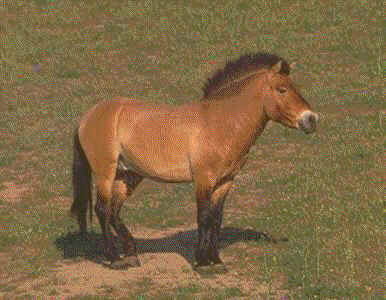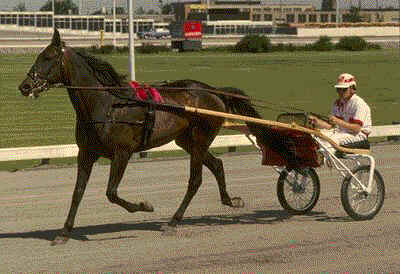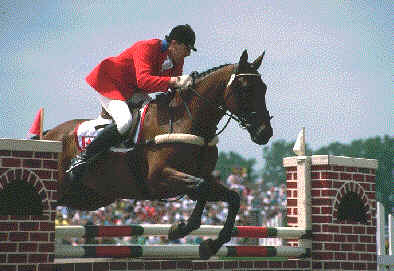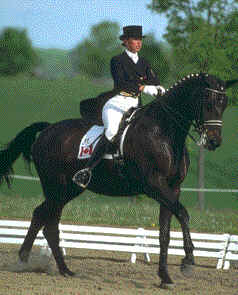
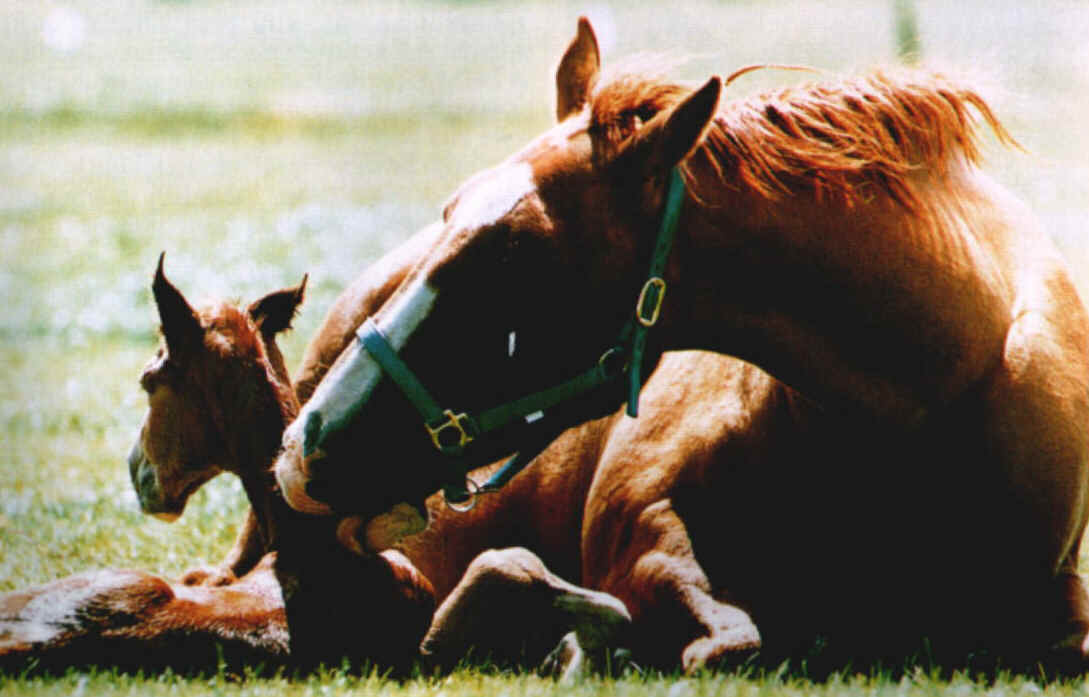
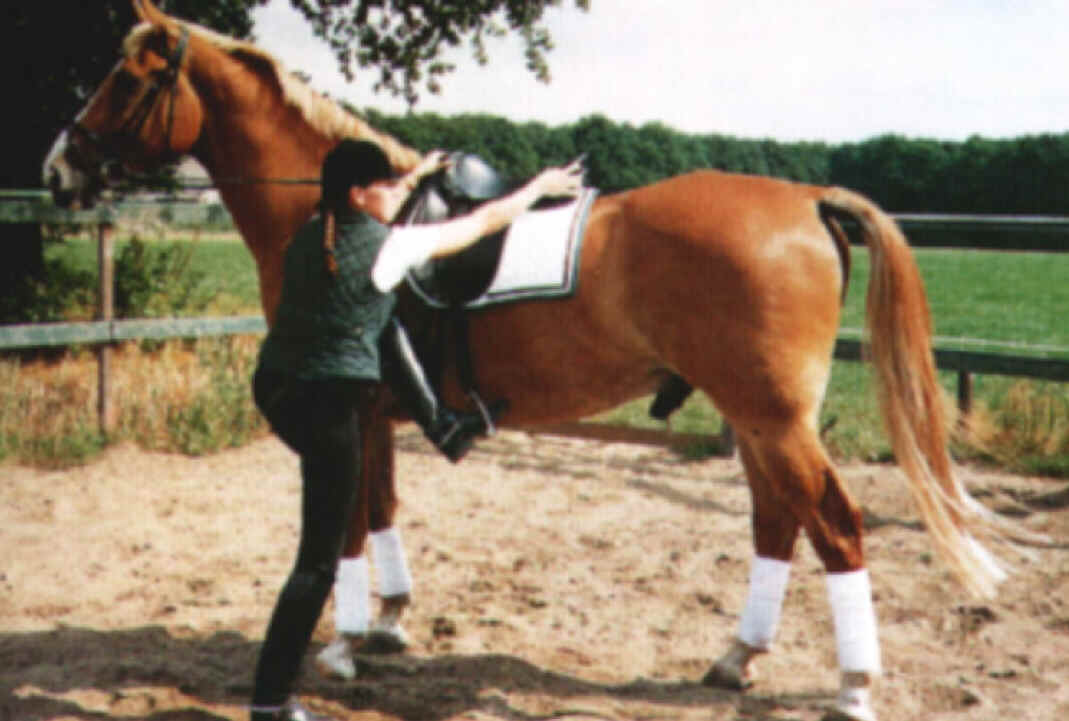
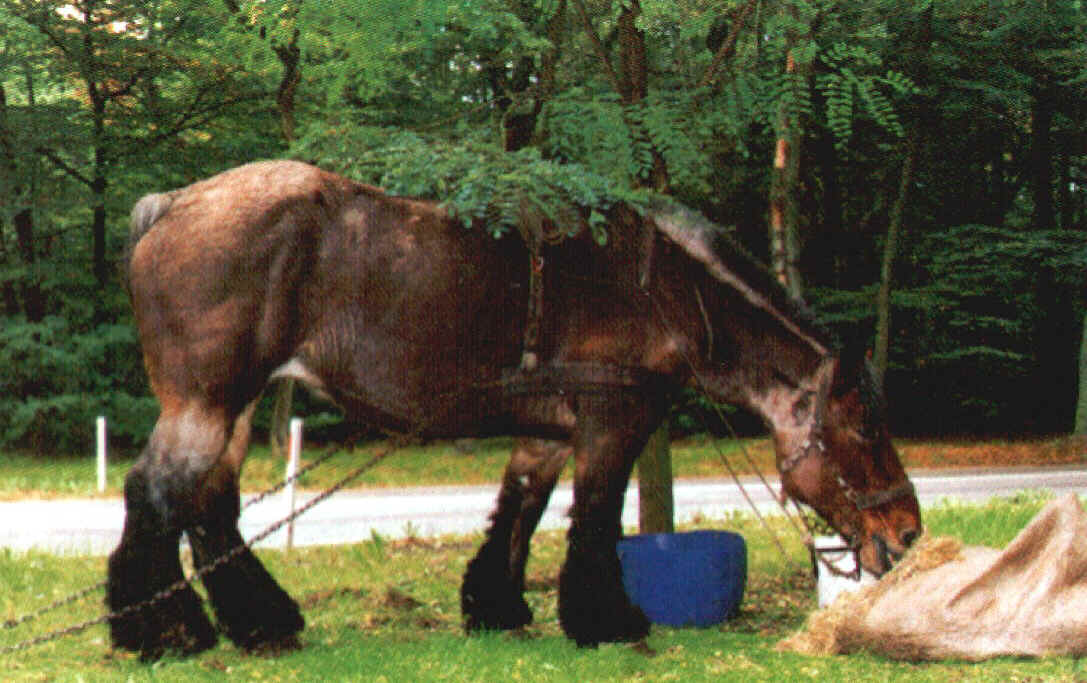
HISTORIE PAARDEN
PREHISTORIE:
The evolution of the horse can be traced through fossil remains
to the Hyracotherium, originally identified as the Eohippus: a
small, leaf-browsing mammal of the Eocene Epoch, 55 million to 38
million years ago. Hyracotherium, about the size of a fox, had
four toes on its forefeet and three on its hind feet. Several
species and related genera appeared in North America and Eurasia
during the Eocene. Then, apparently, the Eurasian species died
out, but the American species gave rise in the Oligocene Epoch,
38 million to 24 million years ago, to the genus Mesohippus.
 In the Miocene Epoch, 24
million to 5 million years ago, Mesohippus was succeeded by
Hypohippus and Anchitherium. Both of these genera probably
migrated to Eurasia from North America. Other descendants of
Mesohippus were Miohippus and Merychippus; the latter genus
developed high-crowned teeth, permitting it to feed by grazing on
grass rather than browsing on leaves. Among the descendants of
Merychippus in the Pliocene Epoch were Hipparion, which
apparently spread from North America to Eurasia, and Pliohippus,
which appears to be the progenitor of the modern genus Equus,
which includes the domestic horse.
In the Miocene Epoch, 24
million to 5 million years ago, Mesohippus was succeeded by
Hypohippus and Anchitherium. Both of these genera probably
migrated to Eurasia from North America. Other descendants of
Mesohippus were Miohippus and Merychippus; the latter genus
developed high-crowned teeth, permitting it to feed by grazing on
grass rather than browsing on leaves. Among the descendants of
Merychippus in the Pliocene Epoch were Hipparion, which
apparently spread from North America to Eurasia, and Pliohippus,
which appears to be the progenitor of the modern genus Equus,
which includes the domestic horse.
During the Pleistocene Epoch, which began 1.6 million years ago,
the genus Equus apparently spread from North America to Eurasia,
Africa, and South America. Subsequently, the native American
horses died out, possibly as a result of disease. Cave dwellings
in Europe indicate that horses were plentiful on that continent
during the early Stone Age (about 2 million years ago to about
4000 BC). Dismembered skeletons of horses have been found in
sufficient numbers in and near Stone Age dwellings to show that
horses were frequently killed and eaten. In Neolithic times
(about 4000 BC to 2000 BC), when Europe was largely forested, the
number of horses evidently declined. Remains of the Bronze Age
(about 1000 BC) include bits and pieces of harness, which clearly
demonstrate that horses had become domestic animals in this
period.
PRÉHISTORIE - GANGEN - MODERNE PAARDEN




